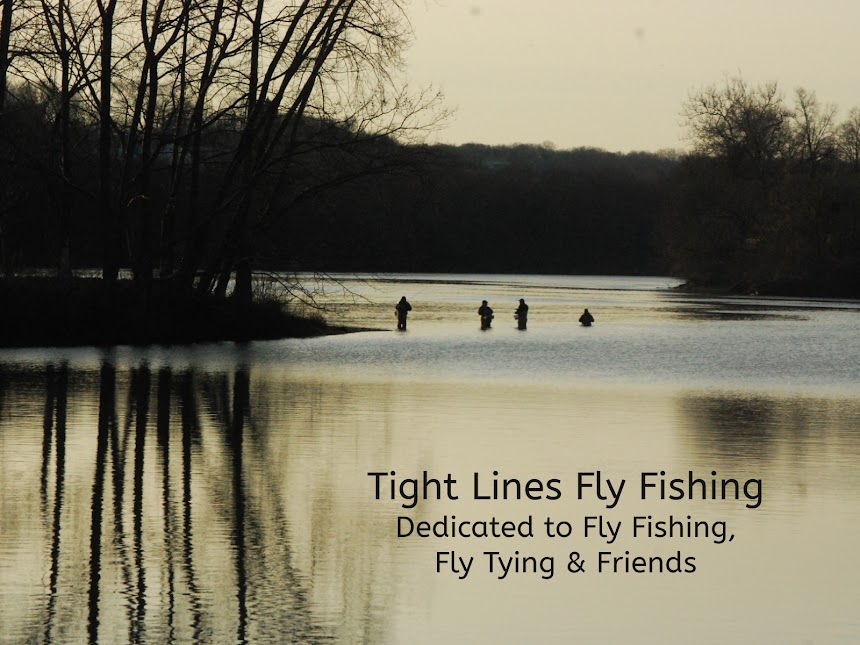Gurgler
(A Jack Gartside Fly)
Hook:
Mustad #34011 a.k.a S74SNP in size #2/0.
Thread: UTC 140 Denier, or Monocord, White.
Trailing
Loop: Optional to prevent the tail from fowling.
Tail: Two contrasting colors of Bucktail, at least a hook
shank length from the tie in point.
White Bucktail on the bottom, topped with a 2-4 strands of silver or
pearl Krystal Flash, topped by 2-4 strands of Pearl Flash-A-Bou, topped by a
darker color Bucktail.
Under
Body: Closed-Cell
Foam. Foam should be 1/2" – 5/8”
wide for most flies. Use foam at least 1/8” thick. You
can also glue two contrasting foam colors together for this fly.
Rib: Krystal or Palmer Chenille (Approximately ½”
length).
Shell Back & Lip: Remaining strip of Closed-cell foam pulled
over body and secured just behind eye.
Trim foam leaving an excess of about 1/2” protruding beyond eye.
Many years ago, I posted this fly because it was one of the best surface flies I used for stripers. I’m posting it again because if you’re going to fly fish on the salt surface, you need to fish this fly. This past spring (2022), my friends and I experienced a weekend on Cape Cod where we had exceptional success fishing a Gurgler. Standing shin to knee deep in water, we landed fish after fish in excess of 30”. A fishing experience of a ‘life time’. Those friends included HFFA members Will Stone, Will Stone Jr., Jeff Purcell, Mike Shannon, Joe Marchese, and Sebby Lagana. Here’s what I wrote about the gurgler years ago.
This is my most successful surface fly for striped bass. It can also be tied and adapted to fresh water. I use it on the “Hous” for small mouth (in yellow) and it’s a consistent surface producer. It moves a lot of water, is easy to tie, and is easy to cast. I think it works so well for stripers because it is a more realistic imitation of a baitfish on the surface. I’ve also found that stripers tend not to have the best “eye sight” where surface feeding is concerned. This fly sits low in the water and moves along smoothly giving bass a better chance to hit it. Both a fast and medium retrieve work well with this fly. Also try stopping your retrieve and letting it just sit in the water for a few seconds. Sometimes that’s just enough to trigger a hit.
To tie this fly, begin by placing your hook in the vice. Start your thread a little more than halfway down the hook shank from the eye. If you so desire, you can create a ‘mono-loop’ to prevent the tail from fowling. Next cut a small bunch of long White Bucktail for the tail. It should be at least a hook shank in length and tied in at the initial ‘tie in’ point. Take 4 strands of Silver or Pearl Krystal Flash, double it around your tying thread, then affix it to the top of the tail. Now do the same with 4 strands of Pearl Flash-A-Bou. All of the ‘flash’ should extend approximately 1/4” beyond the tail. Now top it with an equal amount of Bucktail. If you so desire, you can use a contrasting darker color.
You now want to prepare your foam strip. It should be approximately ½” wide. If you have access to a paper cutter, it’s an excellent tool to make uniform strips. Foam from hobby or craft stores can work great for this. Tapper one end of the strip about a hook shanks length. This will make it easier to tie onto the hook shank. Apply a small drop of Zap-a-Gap or cement of choice to the front part of your thread wraps. Secure your foam to the shank with spiral wraps but do not wrap beyond the ‘tie in’ point of the tail. Next, secure the rib of Krystal or Palmer Chenille at the rear of your body. Bring your thread up to the forward part of the underbody. Make a couple of half hitches at this point but do not cut your thread. Wrap the Chenille forward and tie it off leaving space behind the eye. Cut off your butt end. Fold your Foam Strip over and take 4-5 tight wraps with your tying thread. Now pull the front flap back and make additional tight wraps to prop it up. Snip the foam off leaving about a ½” lip. Some tiers like to put an additional small ‘support’ foam strip on the top of the shellback and lip to provide additional support. I’ll leave that up to you if you want to do that. Finally, return your thread under the lip of the fly, whip finish and apply some head cement. Your done.
Tightlinevideo has a great instructional video below:
If
you have any questions about this fly or would like to submit a Fly of the
Month I can be reached at pdinice@frontier.com .


No comments:
Post a Comment